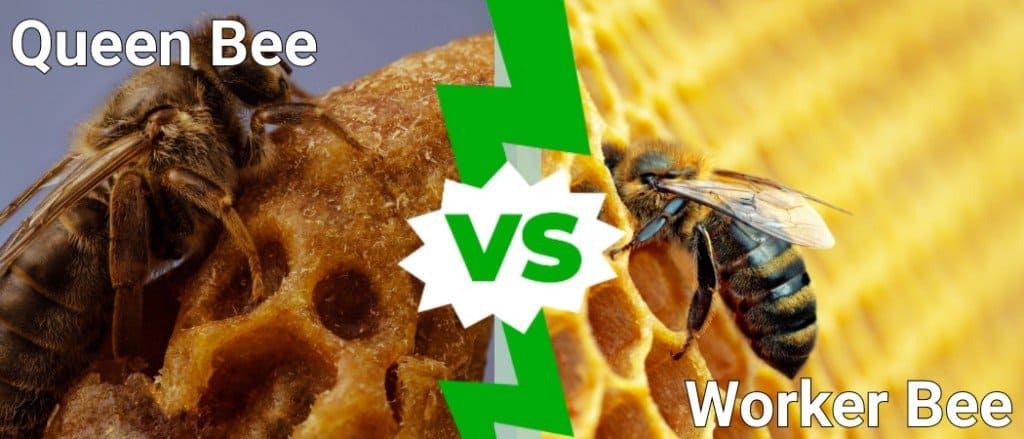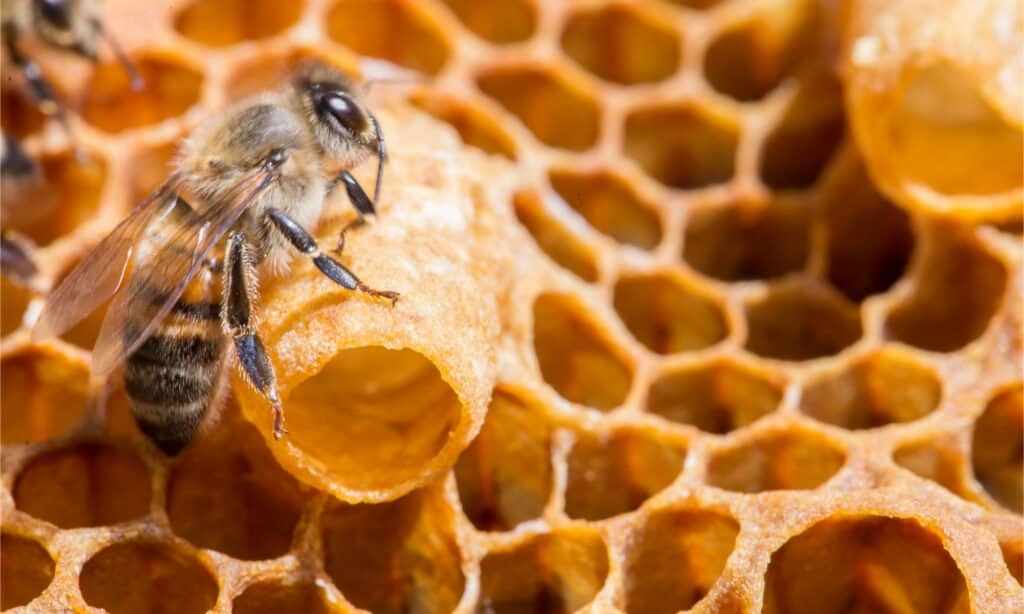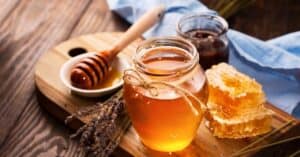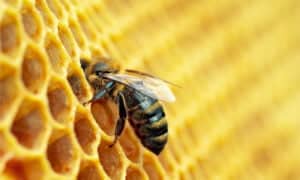Both the queen bee and the worker bee are female honey bees, but they play different roles in the beehive. Most people know that all bees work harmoniously to keep a hive nurtured and sustained with proper food, protection, and continuous offspring. The queen is almost genetically and anatomically similar to worker bees, except they are fed a special diet and have abilities not present in other female bees. Each bee contributes to well-being and protection, but worker bees do most of the work. Only one queen bee lives in each colony, protected and nurtured by thousands of worker bees. But despite their gender similarity, the queen bee varies from worker bees in many different ways. So, what are the differences between a queen bee vs her worker bees?
Comparing a Queen Bee and a Worker Bee

| Queen Bee | Worker Bee | |
| Size | Largest among a beehive, measuring around 2 cm or 20 mm. | Smallest bee in a beehive, measuring between 11 to 15 mm. |
| Role | To reproduce and fertilize drone and worker larvae. | Collect nectar to form honey, carry and spread pollen, feed the queen, her larvae, and the drones, and defend the colony from outside threats. |
| Diet | Feeds on royal jelly. | Eats pollen, nectar, and honey. |
| Lifespan | 2-7 years | 4-6 months |
The 4 Key Differences Between Queen Bees and Worker Bees
In a beehive, the roles of the male and female honey bees generally differentiate them from one another, but there is one specific female bee that has a special and unique role above them all –the queen bee. The queen bee is the most important in a colony, not because she protects the hive but because she is the only one responsible for laying and producing eggs. Without her eggs, she wouldn’t be able to constantly replenish the colony with new batches of worker and drone larvae. Yet, apart from this significant difference in function, the queen bee and worker bee have other sets of characteristics that set them apart.
Queen Bee vs Worker Bee: Size
The queen bee is about twice the size of a female worker bee. A queen bee reaches a length of 20 to 25 mm, while worker bees hardly ever get more than a centimeter. Among the three types of bees inside a hive (worker bee, drone, and queen bee), the queen bee is the largest. But how does the queen bee get so big? The queen bee’s age, genetics, and feeding habits help it grow this big. To understand how queen bees grow larger than ordinary bees, we must first understand how they are made.
Queen bees are not born as they are. They hatch as ordinary bee larvae. When a queen bee dies, worker bees will search for healthy larvae about three days old and place them inside special cells called “queen cells.” Here, chosen larvae will feed only on royal jelly until they emerge to mate with drones. After the first mating, all selected bees will kill each other using their stingers, and the last bee standing will be the queen.
Queen Bee vs Worker Bee: Role

Worker bees are responsible for almost every job in their colony except for the job of the queen, reproduction.
©tuncarif/Shutterstock.com
Although queen bees and worker bees are female honey bees, they have very different roles in the hive. Worker bees earned their name because they are responsible for almost every job inside the colony, except for one thing –reproduction. Bees are oviparous, but while all worker bees are females, they are not fertile and cannot lay eggs. Only the queen bee is responsible for mating with drones and laying eggs.
The queen bee’s primary role is to ensure the colony’s survival, and she does this through reproduction. As long as the queen bee produces healthy eggs, the colony will not die. A queen bee can lay hundreds of thousands of eggs during one lifetime. While all worker bees are females, the queen bee is the only one with developed ovaries, helping it lay many eggs.
On the other hand, worker bees cannot lay eggs but are responsible for all the other tasks in the colony, including feeding the queen, their larvae, and their male counterparts. The worker bees are also accounted for pollination, as they help carry pollen while sipping nectar from flowers. Apart from nectar and pollen collection, worker bees are also the ones that form honey. Equipped with stingers, they can also defend their hive from outside threats. There are thousands of worker bees in one hive, while there’s only one queen bee. Despite the differences in their roles, they both work together to nurture their colony.
Queen Bee vs Worker Bee: Diet
Queen bees are chosen, not born with a royal crown on their heads. Often, queen bees are regular bee larvae put in a special cell and fed with royal jelly. While queen bees eat only royal jelly to help them grow significantly bigger than ordinary workers and drones, worker bees eat the same diet as drones, feeding on nectar, pollen, and honey.
Worker bees collect nectar and pollen and produce their own food. The collected nectar is also used to form honey, which they feed to drones and larvae. While worker bees collect and produce food, queen bees rely on the worker bees’ food production. The royal jelly that queen bees eat is a milky substance that causes the bee’s behavior and physiology to differ from those of worker bees. This substance is a protein-rich excretion from worker bees or their version of milk.
Queen Bee vs Worker Bee: Lifespan

Queen bees live longer than worker bees.
©Ihor Hvozdetskyi/Shutterstock.com
Queen bees and worker bees have varying lifespans. While worker bees only live quite shortly, living only 4 to 6 months on average, queen bees can live for years. Some queen bees can live for five years before dying. Because of the bees’ naturally fleeting lifespan, queen bees should keep laying eggs while they live to keep their hives replenished with healthy larvae and help their colony survive.
The photo featured at the top of this post is © Ihor Hvozdetskyi/Shutterstock.com
Thank you for reading! Have some feedback for us? Contact the AZ Animals editorial team.






